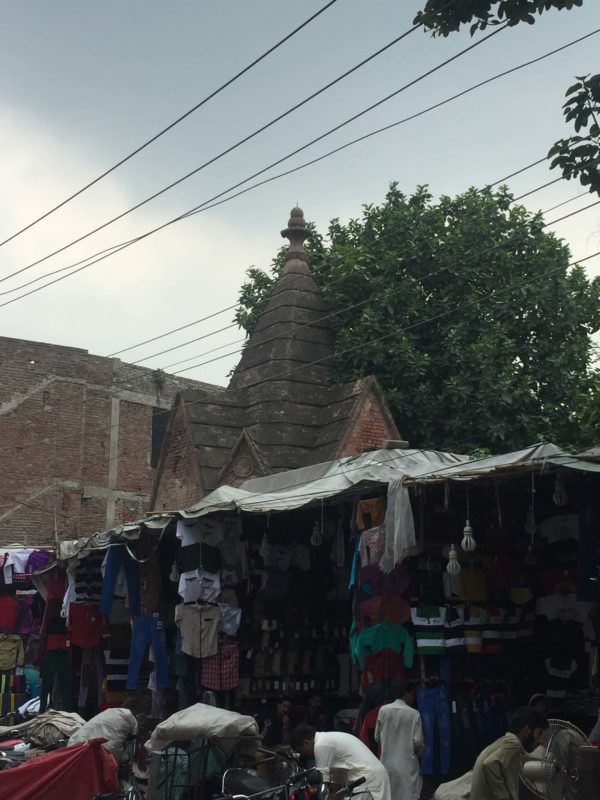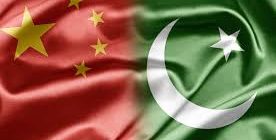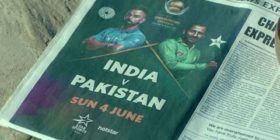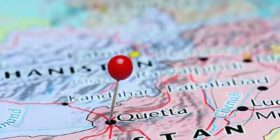The turret rises amid lines of shops selling clothes. Its thick bricks are proof it was constructed during the colonial era. Hundreds of visitors glance at the children’s clothes hanging at the shops here, oblivious to the turret behind. This is one of the several monuments in this area, an essential part of this historical market of Lahore – Anarkali Bazaar. A vendor looks at me suspiciously as I photograph the turret behind his shop.
The structure under the turret – once a well – has been long lost, occupied by traders after Partition with a vengeance, to remove all traces of Hindus from the city. “The [caste] Hindus wouldn’t let us have water from this well,” Shams Gill, an 80-year-old born into the Valmiki Hindu caste told me a few years ago, when I was interviewing him at the Valmiki temple a few streets from here. “Both Valmikis and Muslims were regarded as untouchables.”
This is one of the two functional Hindu temples in Lahore, where Valmikis gather to mark religious occasions. Many of them converted to Christianity at the time of Partition so that they could stay on in their ancestral homes without risking persecution.
On a hot, humid afternoon, as I walked around Anarkali Bazaar photographing its historical structures, I could not help but notice that between them, the structures captured the story of Partition and the subsequent construction of Pakistani nationalism.
For example, one of the explanations cited for the need to create a separate country for Muslims was the discrimination the community faced at the hands of upper caste Hindus in undivided India. Nationalist Pakistani history says that Hindus would treat Muslims as untouchables.
However, Valmiki Hindus continued to be treated as untouchables in Pakistan. Many Muslims in rural and urban Punjab still keep separate utensils for Christians, treating them as impure. One of the Valmiki Hindus that I interviewed at the temple told me that a Muslim milk vendor from this market would pour milk into his utensil while making sure that their utensils didn’t touch.
For Pakistan’s Muslims, history had come full circle – the majority had started persecuting a new minority.
Rising up the ranks
At a little distance from the turret, deeper into the market, is the mausoleum of Qutub ud-Din Aibak, a slave who went on to become a king and establish the Mamluk dynasty’s rule over the Delhi Sultanate. Protected by a small boundary wall to fend off squatters, the tomb stands on a small platform and is decorated with calligraphic Quranic verses. The grave is constructed in white marble and covered with a velvet cloth that contains verses from the Quran.
The small lawn facing the mausoleum is neatly trimmed and the structure well looked after.
In the 1970s, the monument used to be in a shambles, a den of drug addicts. It was renovated on the orders of Prime Minister Zulfikar Ali Bhutto and since then, the government has been particular about its maintenance, even as numerous other historical structures around the mausoleum rot.
That’s because Aibak’s story neatly fits into the Pakistani nationalist framework. That a slave could rise to the top of the pyramid to become a king highlights the egalitarian nature of Islam. His Qutub Minar in Delhi still contains traces of temples that were destroyed to raise the pillar of a new civilisation. This is what Pakistan is meant to be – the rise of the Islamic civilisation to its long lost pinnacle – and Prime Minister Bhutto understood that this was a symbol to be preserved.
Facing the mausoleum are the remains of a splendid Hindu Temple. Even in its dilapidated state, the temple looks glorious. The wooden balcony and the exterior wall of the temple show signs of weathering. At the top of this structure is an intricately carved turret.
Abandoned during Partition, the temple was taken over by Muslim refugees from across the border and is now home to several shops and apartments. Its exterior is the only evidence that this was once a temple.
It is no surprise that as the mausoleum of Qutub-ud-din Aibak was renovated, the temple was left unattended and at the mercy of its new occupants. It did not fit into the narrative of a state trying to shake off signs of its historical connections to Hinduism. Rather, it was better if all its traces slowly disappeared, making easier to focus on the Islamic history of this land.
Fading signs
Reinforcing this narrative is a building close to the temple. This was one of the most prominent residential buildings in this market in pre-Partition Lahore. Even as the structure survived, it became increasingly important in the new climate to change its name, and someone meticulously scratched the name “Jia Ram” from it. There was no need to remind ourselves that Hindus and Sikhs once lived in a city that now belonged to Muslims.
Another metaphor of the changing landscape in the country is at a little distance from here – Pak Tea House. In the early days of the creation of the country, when questions the intellectual circles would debate what Pakistan ought to be, several writers, professors and intellectuals used to gather at this tea house and engage in passionate discussions. Pak Tea House had become a symbol of revolution in post-Partition Lahore.
Gradually, as the dominant and State-sanctioned narrative of Pakistan quickly silenced all other views, the vibrancy of the Pak Tea House also faded away. It was turned into a warehouse by a tyre vendor. A few years ago the government renovated the tea house and made it a functional café once again, but the intellectual culture that had once given a distinct stature to the Pak Tea House had disappeared.
Parallel to the Pak Tea House, a few steps away from it is a tall white building.
At the top of the building, engraved in its walls, is the structure’s old name: Ramkrishan and sons booksellers. Just a little under this is the mammoth board of a shoe shop, which now operates from the building. Could there be a better representation of the decline of intellectual activity in the country over the years?
Haroon Khalid is the author of three books – Walking with Nanak, In Search of Shiva and A White Trail.






Leave a reply